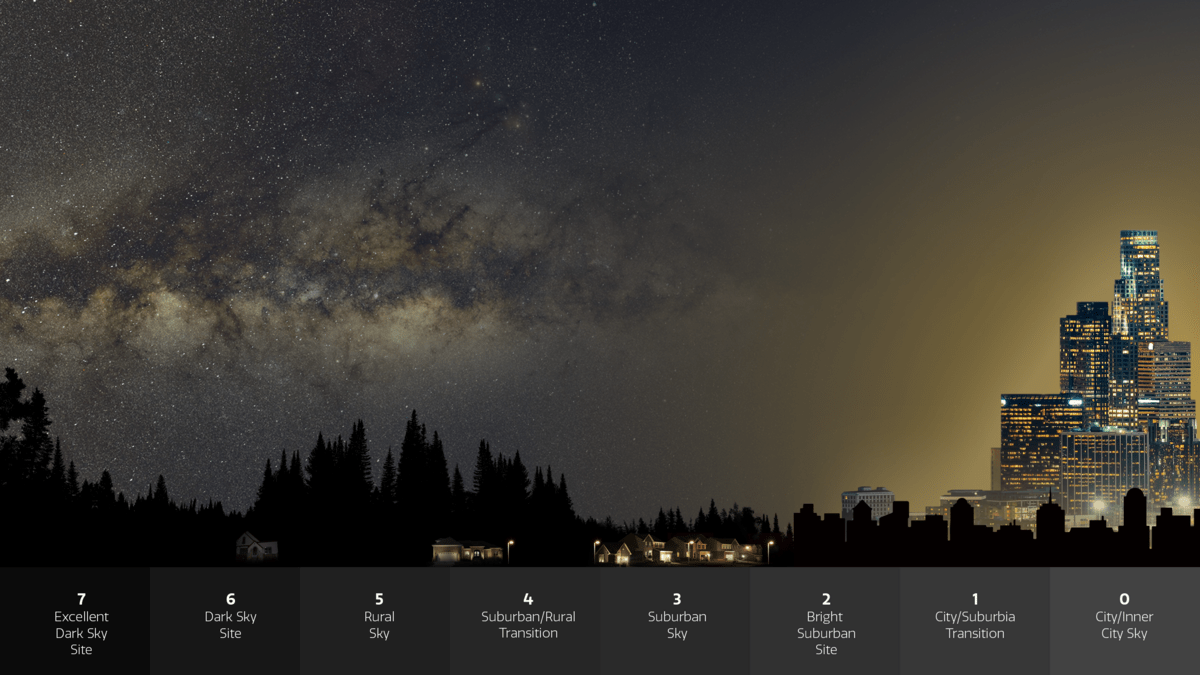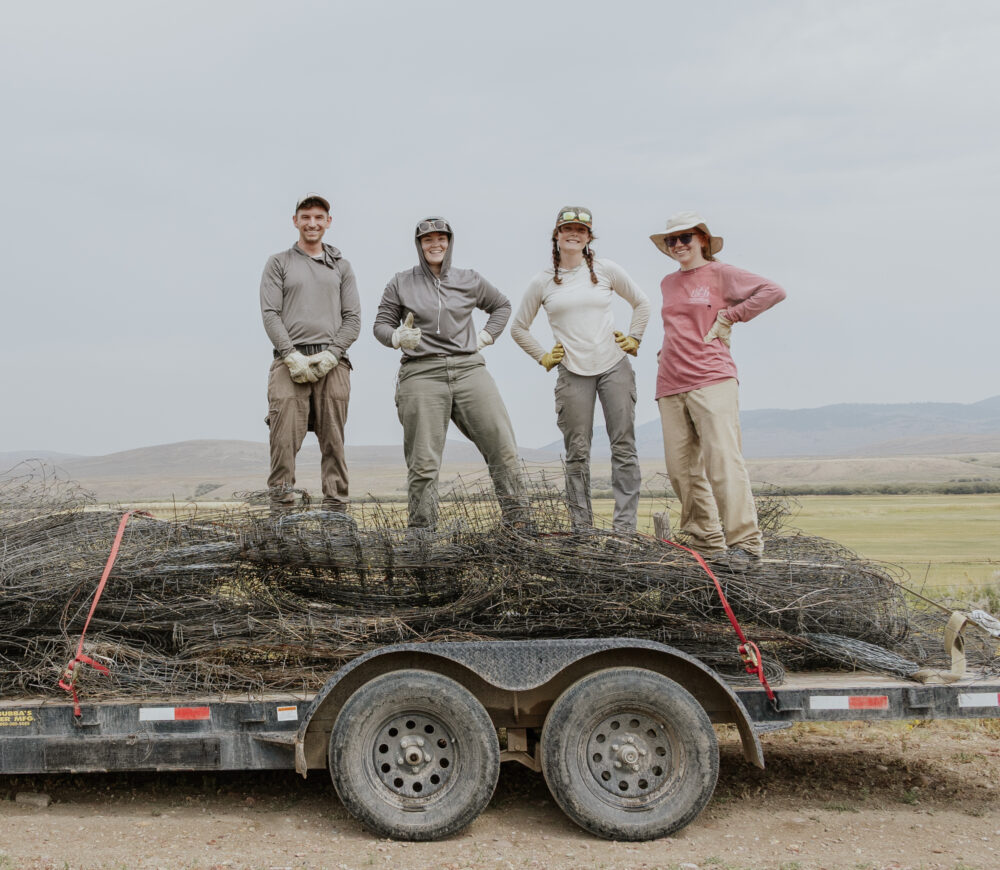We have much more to do and your continued support is needed now more than ever.
Light Pollution Harms Migratory Birds—Here’s How You Can Help

Every autumn, billions of birds in the Western Hemisphere embark on a trip south. For some birds, the voyage spans hundreds of miles; for others, it spans thousands. In North America, about 350 species undertake long-distance migrations from breeding grounds in Canada and the U.S. to wintering grounds in Central and South America. For example, the tiny blackpoll warbler (Setophaga striata)—a bird that weighs about as much as an AA battery—may fly 1,500 to 2,000 miles over the Atlantic Ocean without stopping.
It’s a perilous, exhausting journey. Birds can be blown off course in bad weather or may collide with tall towers or buildings. In the U.S. alone, building collisions kill more than one billion birds annually. And every year, important “stopover sites” where birds rest and refuel are degraded or lost altogether as habitat conversion and urbanization continue.
Night Flight
If it’s hard to imagine that this incredible phenomenon could largely escape notice, it’s because the majority of migratory birds in North America make their journeys at night while we’re sound asleep. Flying at night has its advantages: some species can take cues from the stars as they find their way, and many small birds use the cover of night to hide from predatory birds which often migrate during the day instead. By morning, some birds stop to rest and refuel—and sometimes they do so in large numbers, to the delight of birders across the country.
Increasingly, however, light pollution poses a serious problem for migrating birds by compounding other hazards. Bright lights can attract and disorient birds, causing them to waste precious energy and increasing their likelihood of collision with buildings, which can cause injury or death. Urban areas may fail to provide the resources birds need to refuel and increase their risk of exposure to predators such as cats.
Shining light on an underappreciated hazard
Unfortunately, light pollution is worsening at a breathtaking rate across the globe, by around 10% per year.

Light pollution doesn’t just interfere with bird migration. Research has shown that it creates barriers to movement for some wildlife, such as bats and cougars, and acts as a lure for others, in the case of sea turtle hatchlings. Artificial light at night also harms nocturnal insects (and about half of all insects are nocturnal, so that’s a big problem). Despite the old adage about moths being drawn to flames, light at night actually disorients and traps many insects, leaving them vulnerable to predators and exhausted. Harm to insect populations, in turn, reduces feeding opportunities for migrating birds.
Humans aren’t immune to these harms, either. Exposure to artificial light pollution disrupts our circadian rhythms, which can contribute to sleep disorders, poor mental health, cardiovascular disease, cancer, and other serious health problems. And as with many other environmental hazards, the risks from exposure to light pollution are not equally distributed, with historically disadvantaged groups suffering disproportionately from light pollution.
How can we help?
Our birds are in trouble: the 2025 State of the Birds report identified about one-third of all U.S. bird species as high or moderate concern. We’ll need a suite of conservation measures—including protection of breeding and wintering grounds, management of invasive species, and grassland and wetland restoration—to pull species back from the brink.
But unlike many other problems in conservation, light pollution is one we can all begin to address in our yards and in our communities with the flip of a switch. Cities such as Flagstaff, Arizona offer a model for communities interested in adopting policies to dramatically reduce artificial light pollution and preserve the night sky. It’s up to us to ensure that future generations have the chance to witness the wonders of migration or the beauty of the starry night sky.
The second Saturday in October is World Migratory Bird Day, and this year’s theme is “Shared Spaces: Creating Bird-Friendly Cities and Communities,” Here are three ways you can make a difference to reduce light pollution and help birds in your backyard, today and in the future:
- Practice responsible outdoor lighting, and encourage your friends and family to do the same. You can find tips from the U.S. Fish & Wildlife Service and DarkSky International on ensuring that you have light when you need it, where you need it, to reduce light pollution without compromising on safety. If you’re feeling inspired to make change at the local level, DarkSky International also offers recommendations for municipal policies and advocacy. Use your voice to make a bigger impact!
- Join people around the world in participatory science by getting outside and observing birds this month! The second Saturday in October is the Cornell BirdLab’s “October Big Day,” when people from around the world will report the birds they see on eBird, a free global platform for bird observation data. You don’t have to be an expert—you can take part by spending 10 minutes observing birds in your own backyard. Data from participatory science on eBird and beyond helps inform conservation efforts.
- Make your yard wildlife friendly year-round. In addition to reducing artificial light, you can take steps to ensure that wildlife have space to thrive right in your yard. This can include adding bird-safe markings to windows, reducing the use of harmful chemicals, practicing responsible pet ownership, or planting native plants. (In many parts of the country, October is also a great time to Leave the Leaves.) No yard? No problem! Local land managers and conservation groups need your help. Research local opportunities to support native habitat restoration, invasive species removal, and conservation education near you.

Check the Forecast!
Did you know that bird migration can be detected by weather surveillance radar? Thanks to weather radar and recent technological advancements, scientists are now able to both track bird migrations in real time and forecast migration days or weeks in advance. You can find maps of current migrations and forecasts at BirdCast, supported by the Cornell Lab of Ornithology. BirdCast also offers more tips for going Lights Out!
To learn more about how BirdCast helps us monitor migration, check out our blog here.






















